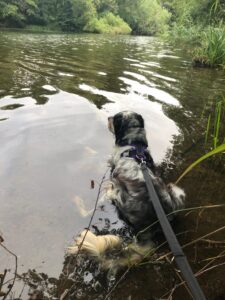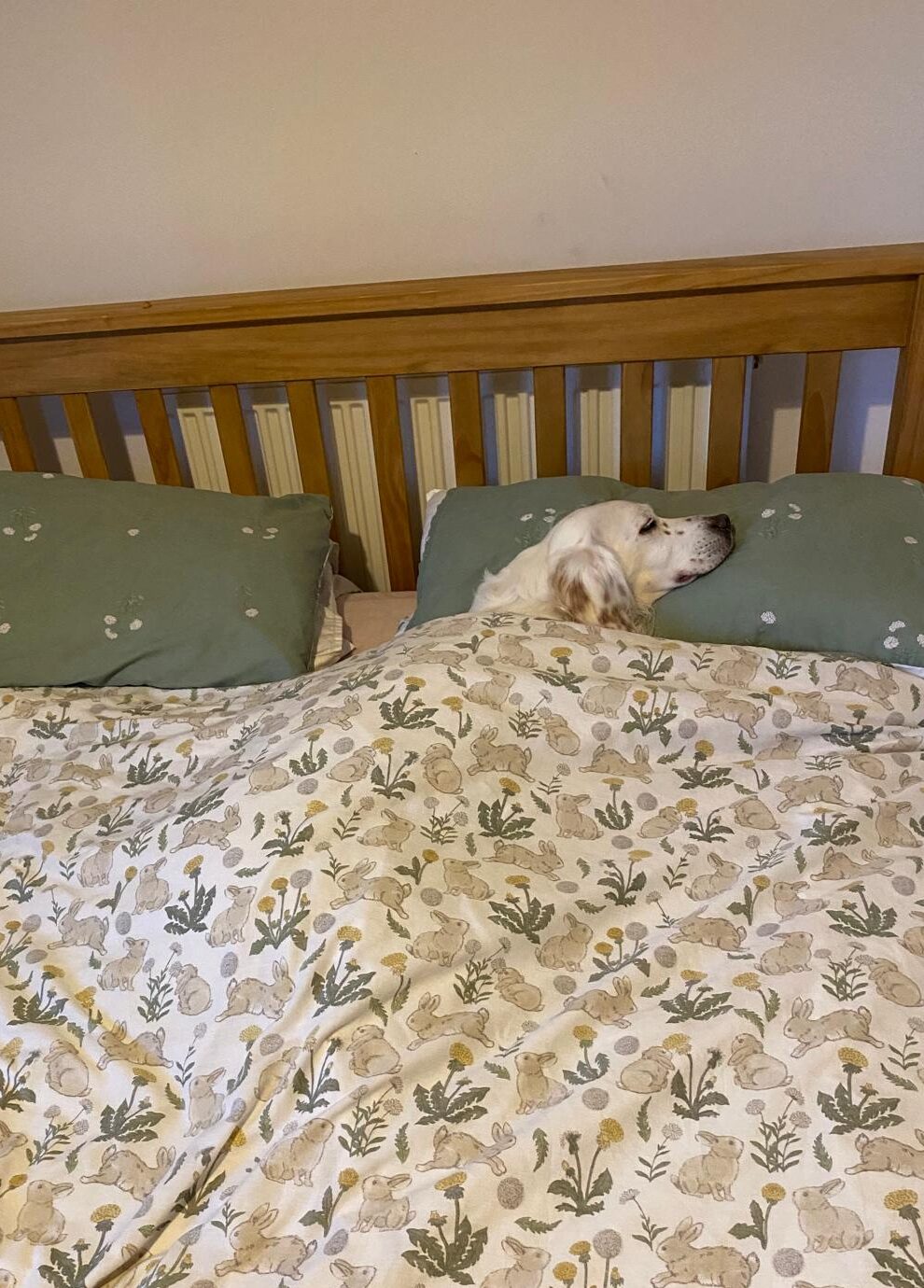Many of the dogs we rescue haven’t experienced many lead walks in their lives, let alone been trained to ‘walk to heel’. Some of the breeds we rehome have an incredibly high prey drive and the dogs have had little freedom and exercise before they arrive at their new home – so it’s little wonder they can often pull on a lead walk.
It takes time and persistence to train your dog to walk well on a lead, but in order to achieve that you need the right equipment.
We advocate for dog walking equipment that is safe, secure and prioritises your dog’s health and happiness.
First, a quick anatomy lesson…
When a dog gets excited, they run forward, and we apply a sudden tug on their collar. This sudden tug can be as much as 5Nm, which is probably the same force you use to apply a torque to a bolt and nut.
Every time you pull your dog, you are constantly adding pressure to their lymph nodes, mandibular and thyroid gland, choking on the trachea and oesophagus.
Harnesses
A well-fitting harness is the ultimate dog walking accessory.
A proper fittings harness with both front and back attachments and a double ended lead, will give you the ability to steer the dog, while causing no harm. The front attachment is paramount as it naturally puts the dog in a better position, just like we have lead horses and other working animals from the front for hundreds of years.
It also teaches the dog that pulling is ineffective as it will cause them to pivot and face their owner instead of getting to where they want to go any faster, at the same time as allowing you to ‘steer’ the dog. Using both attachments with a double ended lead will distribute the pulling force more evenly.
Not all harnesses are created equal, and it’s important to pick the right harness. Harnesses with only a back attachment can encourage the dog to pull and should be avoided.
You want to ensure that you have a harness that can be adjusted to properly fit your dogs size, with no friction, and are non-restrictive so they allow your dogs whole front legs to move freely
A dog’s legs are attached to the body by pure muscle and these must be free to move with every pace, especially in working dogs or if you plan to run with your canine buddy. In contrast, a restrictive harness typically sits across the shoulders, which can affect movement and the dog’s gait. In addition, pressure on the front of the shoulder could affect the biceps tendon, and there is some debate as to whether this may cause problems such as bicipital tendonitis and altered gait can cause increased pressure on shoulder joints.
We only recommend dog harness brands that we would happily use on our dogs.
These popular brands are favourites amongst good dog behaviourists and trainers and are designed to fit the dog perfectly, with no friction and an even distribution of pressure. They are also classed as non-restrictive, allowing the whole front legs to move freely.
It’s important to make sure your dog’s harness is a comfortable fit. If necessary, your harness may need to be adjusted or replaced as your dog grows.
Specialist harnesses
Depending on your dog and their activities, you may need to look into more specialised harness types.
If your dog is a resolute escape artist and will try to slip their harness on every walk, certain brands like Ruffwear do harnesses with an extra strap level to make them even more secure for your dog.
For those dogs who are frequent park run participants and like to clock up the miles running, there are specialist harness and leads for canicross participants. These are designed specifically with running in mind.
Collars
Your dog must wear a collar when in public places. This allows you to have a dog identification tag affixed to it with your name and address on as required by law.
Dog collars come in a huge variety of materials and designs now.
When selecting a traditional style collar, you might want to consider your dog’s personality and activities.
Nylon collars are a popular choice for many, but for those of us with dogs who love nothing more than to roll around in the mud at every opportunity, you may want to look into a leather collar or one made from a material like biothane that can be easily wiped clean.
Do not walk your dog by simply attaching a lead to their collar:
- A dog pulling on their collar puts excessive pressure on their neck and can cause them injury
- Your dog can slip out of a collar so they are not a means of securely walking them
- If your dogs collar is too tight this can cause pain and injury to your dog
Other collar types
Positive, pain-free training is something every dog deserves. It is up to us as owners to advocate for our dog’s welfare and use training tools that prioritise our dog’s health and happiness.
We strongly advise against using any of the following types of collars due to ethical reasons and the physical discomfort, damage and distress they can cause to your dog:
- Head collars – there are many reasons to not use a head collar. Firstly, the vast majority of dogs will hate having a head collar on and it takes a lot of reinforcement to acclimatise your dog to wearing one – time that could be better spent with your dog wearing a harness and working on good walking techniques. Many dogs will be distressed from wearing one, and we don’t blame them! If your dog will tolerate wearing a head collar, their snug fit by design can rub on their muzzle and around their eyes. They cause discomfort and a dog who pulls on a head collar can experience pain from repetitive stress to their head and neck.
- Chain slip collars, ‘Grot’ collars and similar – these ‘work’ by tightening around your dogs neck and constricting their airway. They can cause physical damage to your dog
- Prong collars – these collars have metal prongs that tighten into the dog’s neck. They use a pain stimulus to try and ‘correct’ unwanted behaviour. These are an aversive tool that is extremely painful and distressing to your dog. They should be avoided at all cost.
- E-collars – these are another aversive training tool that can cause your dog pain, fear and stress. Their use is already banned in Wales.









